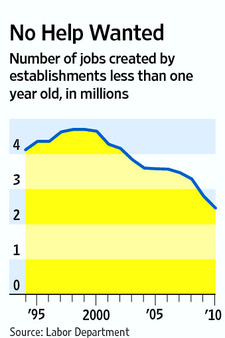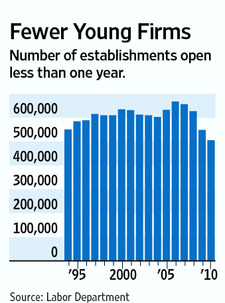On 11/8/11 I received a gracious and interesting email from Steve Ziliak praising and analyzing my recent Jobs haiku. Economist Ziliak has written haiku and written about haiku.
He gave me his permission to share his email:
Dear Art,
Congratulations on your prize-winning haiku about the economy! I read all of the haiku selected by the Kauffman Foundation and posted by The Economist. Meaning no disrespect for the hard-working others, Steve Ziliak aka The Haiku Economist agrees that your haiku was the best of the bunch. Pairing jobs-with-Jobs is potentially hazardous to poetry to the point of being country-newspaper corny. But you’ve pulled it off well in a “senryu” thanks to the dead-serious yet softly spoken third line, “innovate to grow”. Thus “jobs” and “Jobs” serve as “cut words” (kiru or kireji), taking us from the literal to the figurative and back again (that is, to innovation, output, and employment). Well done.
Here are a few articles on the theory, Art, and history of haiku economics, which I first developed ten years ago (in 2001) when I was teaching at Georgia Tech:
http://www.poetryfoundation.org/poetrymagazine/article/240970
http://stephentziliak.com/doc/IJPEE0101-0209%20ZILIAK.pdf
http://stephentziliak.com/doc/Ziliak%20Verses%20of%20Economy%201.pdf
http://www.economist.com/blogs/prospero/2011/01/poetry_and_economics
http://www.tandfonline.com/doi/abs/10.1080/08935690500241501#preview
(In 2002 I published “Haiku Economics” in Rethinking Marxism;
this link here is to “Haiku Economics, No. 2”, published in 2005).
And here is a link to my students’ achievements with haiku economics:
http://sites.roosevelt.edu/sziliak/haiku-economics-by-roosevelt-students/
Congrats again, Art, and keep writing!
Things beyond number
all somehow brought to mind by
blossoming cherries.
– Basho
All the best,
Steve aka The Haiku Economist
Stephen T. Ziliak
Trustee and Professor of Economics
Roosevelt University
430 S. Michigan Ave
Chicago, IL 60605
http://sites.roosevelt.edu/sziliak
http://stephentziliak.com




